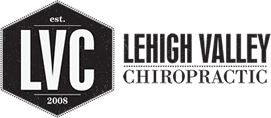Lumbar Disc Derangement
What is Lumbar Disc Derangement?
The intervertebral disc is the connective tissue between the vertebrae (bones of the spinal column). The disc is composed of a nucleus pulposus (gelatinous material at the center of the disc) which is surrounded by annular fibers. Lumbar Disc Derangement (otherwise known as discogenic pain) is a condition of the low back where the disc becomes painful. Lumbar Disc Derangement is thought to be caused by multiple small tears that develop in the disc; nuclear material seeps out into these tears and irritates the nerve endings in the outer portion of the disc.
How is Lumbar Disc Derangement Diagnosed?
Although the gold standard for the diagnosis of Lumbar Disc Derangement is a discogram, this type of assessment is invasive, painful, expensive, and time-consuming. A discogram is a procedure where dye is injected into the disc; if the dye leaks into the periphery of the disc and if the injection reproduces the pain, the test is considered positive. Another test that is sometimes performed is an MRI; this testing may reveal changes in disc anatomy (such as a disc bulge); however, anatomical alterations are commonly seen in people who do not have disc pain. Therefore, it is sometimes difficult to determine if the disc is in fact the pain generator solely by reading an MRI.
The McKenzie protocol is the primary method of Lumbar Disc Derangement diagnosis employed at Lehigh Valley Chiropractic. It is a procedure in which the spine is moved in various directions to detect a symptomatic response that is characteristic of Lumbar Disc Derangement. The clinician looks for “centralization” which is a reduction of pain or movement of pain from the legs or buttocks into the back.
What are the Options for Lumbar Disc Derangement?
At Lehigh Valley Chiropractic, there are two primary methods utilized to treat Lumbar Disc Derangement including end range loading exercise and flexion distraction manipulation. Patients are taught to perform end range loading exercises in the direction by which the pain centralizes; these exercises are to be performed at home at specific intervals during the day. In addition to exercise, patients are treated at Lehigh Valley Chiropractic several times per week for a few weeks with flexion distraction. This type of treatment is performed on a specialized table that allows the practitioner to apply gentle distraction and flexion; this procedure reduces pressure within the disc. Bed rest is not recommended for back pain sufferers; studies indicate that 3 or more days of bed rest may be detrimental. Although you may be uncomfortable, do your best to keep moving. Other options you may consider that are not offered at Lehigh Valley Chiropractic include acupuncture, intradiscal electrothermic therapy (IDET), and surgery. Speak with your Doctor of Chiropractic if you have any questions regarding the risks and benefits of treatment options.
- Carragee EJ, Lincoln T, Parmar VS, Alamin T.A gold standard evaluation of the discogenic paindiagnosis as determined by provocative discography. Spine 2006; 31(18):2115-2123.
- Jensen MC, Brant-Zawadzki MB, Obuchowski N, Modic MT, Malkasian D, Ross JS. Magnetic resonance imaging of the lumbar spine in people without back pain. NEJM 1994; 331 (2): 69-73.
- Donelson R, Aprill C, Medcalf R, Grant W. A prospective study of centralization of the lumbar and referred pain as a predictor of symptomatic discs and annular competence. Spine 1997; 22 (10): 1115-1122.
- Clare HA, Adams R, Maher CG. A systematic review of efficacy of McKenzie therapy for spinal pain. Aust J Physiother 2004; 50: 209-216.
- Gudavalli MR, Cox JM, Cramer GD, Baker JA, Patwardhan AG. Intervertebral disc pressure changes during a chiropractic procedure. BED-Advances in Bioengineering 1997; 36:215-216.
Tags: back pain bethlehem

 610-868-6800
610-868-6800